#water mammals
Note
Hello! I run the social media for my local library and I was just wondering what sort of plant or creature might emerge if I talk about books here. Just a lil guy perhaps, to encourage public library use. A new library mascot to say "Books are cool! Reading is fun!" etc. Thank you for your time and efforts. 📚
String identified:
! t ca a ca a a a t g at t at cat gt g ta at . t a g a, t cag c a . A a act t a " a c! ag !" tc. Ta t a t. 📚
Closest match: Lutra lutra genome assembly, chromosome: 14
Common name: Eurasian Otter

#tumblr genetics#genetics#asks#requests#otters#water mammals#mammals#sent to me#eurasian otter#SUPPORT YOUR LOCAL LIBRARY!!!
7K notes
·
View notes
Photo
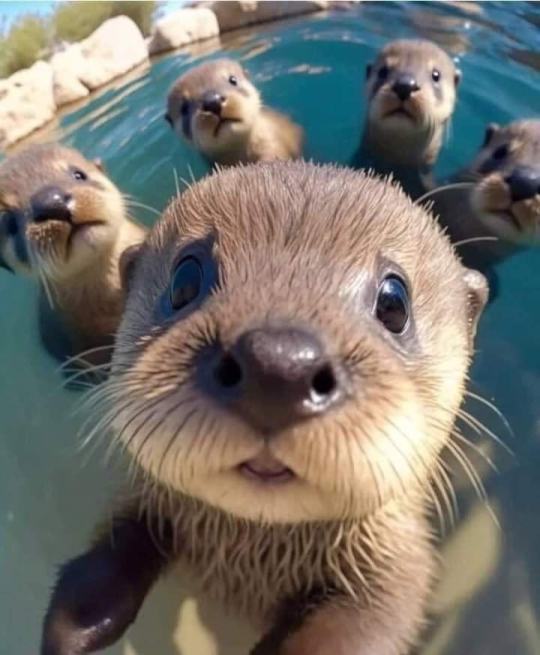
I just can’t get enough of these adorable creatures. Otters have always been my favourite animals and these little guys literally exude ‘animal magnetism’ <3
#otters#animals#cute animals#water mammals#precious animal faces#aww#baby animals#furry babies#just look at them!#<3#That little nosie!!!#Peek-a-boo
123 notes
·
View notes
Text

Alaska, June 2020
Source: poeticecstasy
1 note
·
View note
Text



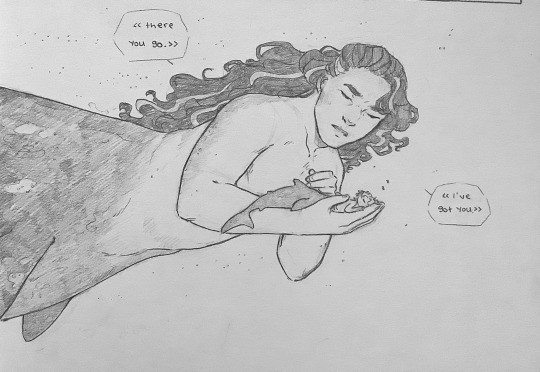
You know when babies are so tired that they’re fussing too much to sleep until you put their head down on your shoulder or something and they pass out immediately
Baby shark has been swimming for a long time with no way to take a break. Hello Whalemack 🐋
(More on Whalemack here)
#whalemack was just swimming#wait what’s that floating up there#it’s coming closer falling through the water#oh there’s fins#and a body and arms and that’s a mer#so Wymack goes to check and it’s a baby shark that is MUCH too still#and he’s been around for a while he knows things#he knows baby shark mers aren’t supposed to be still#so he catches the baby in his arms and holds him so he can sleep#without waking up every minute needing to breathe#TT#and he continues taking care of Andrew whenever he finds the shark/Andrew lets him help#unrelated. realistically I know mammal mers would have short hair or their hair tied back#so it’s not IMMENSELY HEAVY#but I wanted to give Wymack gorgeous flowing locks#just once#as a treat#anyway#next post will be royal au or something else I promise#fan art#my art#aftg#all for the game#andrew minyard#david wymack#mer au#sharkdrew au#oops all mers au#sharkdrew#whalemack
865 notes
·
View notes
Text


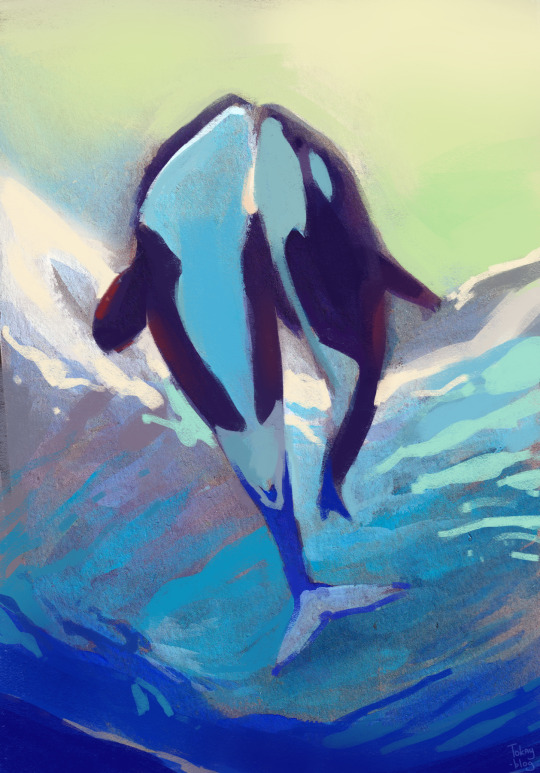
#sketches#study#killer whale#orca#traditional art#with cg#like this sea mammals#but water is difficult#x)
2K notes
·
View notes
Text

Indian Buffaloes by Cuthbert Edmund Swan. From Wild Beasts of the World, Vol. Two. Written by Frank Finn, published in 1909.
Internet Archive
184 notes
·
View notes
Text
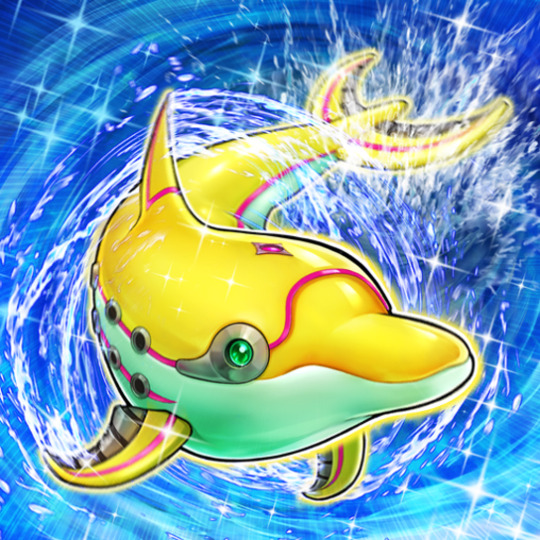
Xyz Slidolphin
#Xyz Slidolphin#yugioh#ygo#Dolphin#yugioh tcg#ygo tcg#Sea Serpent#WATER#How is this a Sea Serpent and not an Aqua...or a Fish (yes I know it's a mammal but still...)
264 notes
·
View notes
Text
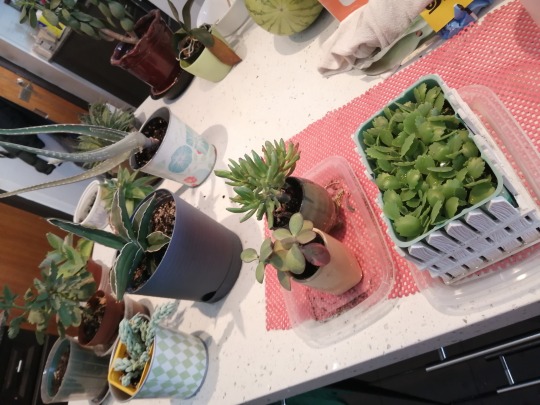
iiiiiiiit's monsoon day at the apartment!
it's been a few months? like since august or september that the succulents have had any water other than an errant spritz here or there so everyone's getting bath-levels of water that'll last them another few months
#tbh nearly every non mammal in this apartment operates on an 'eh they'll be fine for a few weeks" kinda logic#the handful of non succ plants need watering every few days#but the sourdough starter the succulents and the snake are all#keep an eye on 'em but they don't need things every single day kinda beasts
256 notes
·
View notes
Text
Today's Wet Beast Wednesday is about sea otters. I was originally going to do this last week in honor of the 24th birthday of Rosa, the world's oldest sea otter (and one of the oldest sea otters on record) but, well, I forgot. But better late than never.
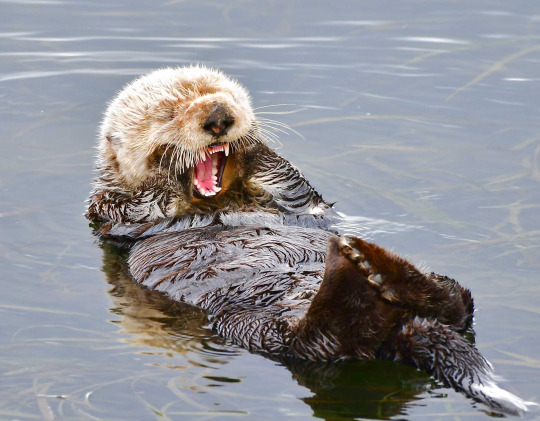
(Image: a sea otter on its back, yawning)
The sea otter (Enhydra lutris) is one of only two otters to live in salt water, the other being the rare and poorly-understood marine otter (Lontra felina). Otters are aquatic mammals of the family Mustelidae, which makes them cousins to weasels, badgers, wolverines, and martens. While many mustelids can swim, otters have adapted to a primarily aquatic lifestyle. Sea otters are divided into three subspecies: the Asian sea otter (Enhydra lutris lutris) which lives from northernmost Japan up through the northwest Pacific, northern sea otter (E. l. kenyoni) which lives from Alaska down to Oregon, and the southern sea otter (E. l. nereis), found in California.
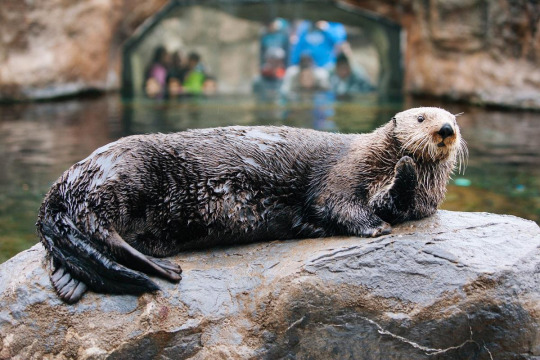
(image: a sea otter relaxing on a rock)
The sea otter is one of the smallest marine mammals (only the marine otter is smaller), yet it is also the heaviest of all mustelids. Males are larger than females, averaging between 1.2 and 1.5 meters (3'11" to 4'11") and 22 to 45 kg (49 to 99 lbs). Females average 1 to 1.4 m (3'3" to 4'7") and 14 to 33 kg (31 to 73 lbs). I honestly thought they were around the size of cats and was surprised to find out how big they can get. Otters are the most recent of the marine mammals and have not developed the thick layer of blubber other marine mammals use to keep themselves warm. Instead, sea otters warm themselves with the densest fur of any mammal, with almost a million hairs per square inch. The fur has two distinct layers: a longer layer of waterproof guard hairs and a shorter underfur layer. The guard hairs keep the underfur dry and trap air between the layers. This air gets heated by the otters body heat and provides an extra layer of insulation. This is the same principle that wet suits work on. The air layer also provides some added buoyancy. Sea otters are positively buoyant and can float on the surface of the water. There are many other adaptations to an aquatic lifestyle that sea otter have. Their feet are webbed and have long digits, allowing them to act as flippers but also making them slower and more clumsy on land. The front claws have retractable claws and pads that let them grab onto slippery objects. When swimming, they use their entire real bodies, but primarily their hind feet, for propulsion. They can hold their breath for up to five minutes and have whiskers used to search for food in darker water. Their ears and nostrils close when submerged to keep water out. While sea otter can, and often do, move around on land, they are capable of living their entire lives in the water. Some evolutionary biologists think sea otters represent an early stage of marine mammal development and can compare them to more established marine mammals like cetaceans and pinnipeds.

(image: a wet weasel holding a sea urchin)
Sea otters are carnivores whose diet consists mostly of hard-shelled invertebrates, though they will also eat fish. They forage for food on the sea floor in dives that usually last a minute. Their paws give them an advantage over other marine mammals, who can only use their mouths for capturing prey. Otters by contrast can pick up and move rocks and dig into the sediment. They are the only marine mammals to catch prey with their paws instead of teeth. Otters carry prey to the surface and eat while floating on their backs. Famously, they use rocks to break open the hard shells of their prey, making them one of the relatively few mammals to use tools (though tool use is proving to be more common than previously thought). Under each arm is a pouch of loose skin that is used to hold prey and rocks. Each otter has a favorite rock that they carry with them. Sea otters have blunt teeth used to crush through prey's shells.

(image: an otter dining on crab)
While sea otters do spend a lot of time in groups, they are not considered truly social animals as they forage, groom, and defend themselves on their own instead of with help. Groups of otters are called rafts that typically have between 10 and 100 members, but can reach up to 2000 members. Rafts are single sex, each having only male or female members. When resting, raft members will hold hands to keep themselves from drifting apart. One social behavior they engage in is play, which is done frequently. Mating season happens in autumn. During summer and autumn, males will attempt to establish territories and push other males out. Females mover between territories at will. Males without territories will swim around and attempt to find females in heat. Males will attempt to mate with multiple females. During estrus, the males and females will bond through play and sometimes aggressive behavior. When mating, the male will bite the female's head, which can leave scars. Otters are capable of delayed embryo implantation, where they can wait for several months between conception and the embryo beginning development. Pregnancy lasts four months and typically results in a single pup. While males are absentee fathers, females are very caring mothers who spend almost all their time caring for their pups. The only time she leaves her pup will be when diving. The pup will be left floating on the surface, often wrapped with kelp to keep it from floating away. The baby will cry for its mother until she comes back. The mother will teach her pup how to dive and forage as it ages. Pups will stay with their mothers for 6 to 8 months (longer in colder areas), and sometimes until they are fully developed. Childless females will foster orphaned pups. Females reach sexual maturity at age 3-4 and males around age 5. They average 10 - 15 years in the wild and can live significantly longer in captivity. The oldest living sea otter is Rosa, living in the Monterey Bay Aquarium, who is 24 years old. The oldest sea otter on record was a female named Etika who lived to be 28.
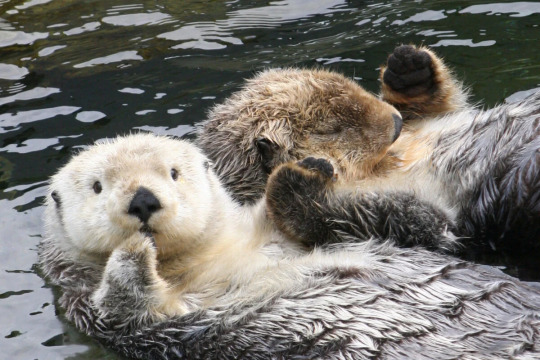
(image: two sea otters holding hands)
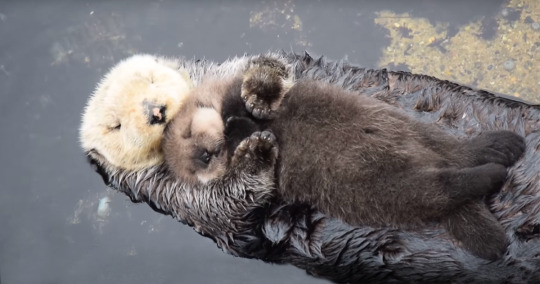
(image: a sea otter mother sleeping with its baby on its stomach)
Sea otters are a classic example of an endangered species. They have been hunted throughout history for their fur. Eventually, this reduced the world population to less than 2000 individuals. They are now the target of conservation measures worldwide and local and international protections, which has helped the population rebound. They still have not regained their historical population or range, though reintroduction measures have helped them reestablish in historical territories. The southern sea otters are the most endangered. Famously, almost all southern sea otters alive today are descended from a group of 50 discovered in 1938, when the subspecies was almost extinct. Sea otters are classified as endangered by the IUCN. Sea otters are a keystone species, having a major ecological impact on their habitats. Famously in California, the near-extinction of southern sea otters resulted in a population boon of sea urchins (their primary prey) which proceeded to kill vast areas of kelp forest. Curren threats include predation, pollution, and habitat loss. Oil spills are particularly devastating to sea otters, as the oil destroys the air layer in their fur, destroying their ability to keep themselves warm.
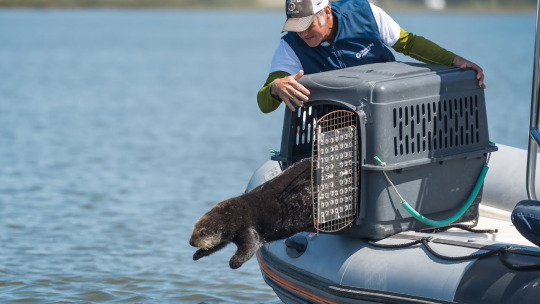
(image: an employee with MBARI releasing a rehabilitated sea otter back into the wild)
#wet beast wednesday#sea otter#otter#marine mammals#wet weasel#water weasel#moist mustelid#marine biology#biology#zoology#ecology#animal facts#adorable
286 notes
·
View notes
Text

Asian water buffalo
By: Unknown photographer
From: Disney’s Wonderful World of Knowledge
1973
88 notes
·
View notes
Text
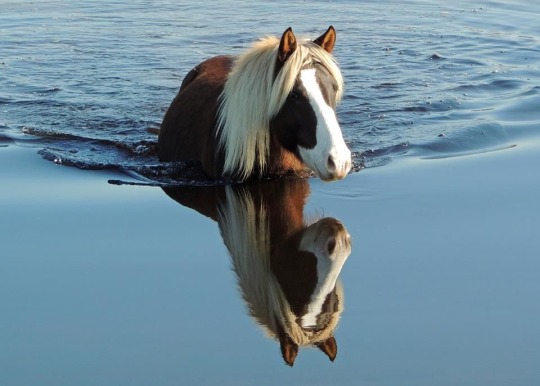
Riptide of Chincoteague
[ID: Riptide, a silver dapple Chincoteague pony with a large blaze, shoulder-deep in clear, reflective water. The pony's reflection is mirror-like underneath him.] via
#horse#pony#chincoteague pony#simple#water#reflection#brown#white#blue#ripples#ungulate#mammal#equine
96 notes
·
View notes
Text
in the latest episode of the Smithsonian Sidedoor podcast, the host goes to great lengths to describe how elusive and hard to spot river otters are, meanwhile I've seen them in a city park?? during broad daylight??? in a major metro area???? many times????? She even interviews an otter researcher who is like 'I've been studying them for years and still only actually seen one in person at the national zoo :('
like girl, move to seattle maybe? idk what to tell you, I've seen them while walking my dog or birding or even just getting coffee.
#????? do they live in an alternate reality where otters are not supremely unconcerned with human nonsense?#river otters in seattle harbor are like. less common than harbor seals but more common than sea lions or porpoises.#maybe just above orca-level common and more usual right in shore#solidly mid-tier level 'oh look! there goes a marine* mammal!'#*yes I know. they're called 'river' otters. they do happily venture into salt water though. they don't care what we named them lmao.
88 notes
·
View notes
Text
absolutely dying to tell someone my shitty theories on the evolutionary tree of pikmin enemies
#dweevils are crustaceans#the man-at-legs is the least related to the other arachnorbs because of body placement#puffstools arent mushrooms but are amphibeans#water dumple tentacles are actually their toes#also water dumples give live birth and the eggs louie refers to in the snitchbug recipe are taken from inside the creature#specifically the grub-dogs internakly gestate eggs#i still have no idea where exactly to put the breadbugs and grub-dogs on the tree#are they heavily changed mammals?? insects?? anew branch entirely???#and thats before getting into the relations of the captains' species#or anything from hey pikmin!#sorry im back in pikmin brainrot#pikmin#pikmin 2#pikmin 4#i fucking loved the groovy long legs fight
56 notes
·
View notes
Text


Gafna
"Not a creature was stirring, Not even a [Gafna]."
Source
Creator: FeroxJ
#lego#bionicle#animal#animal shape#rahi#land#land rahi#matoran universe#makuta creation#rat#rodent#mammal#mammalia#quadruped#tail#ice#fire#water#elemental#multiple models#bricks#2006#voya nui#video games#video game characters#voya nui online game#multiple limbs#multiple legs#four legs
69 notes
·
View notes
Note
I would love a chunk-funk-gunk rating of any seal of your choice!
Today on CHUNK! FUNK! GUNK! We rate
the HARBOR SEAL:

10/10 Chunk
4/10 Funk
0/10 Gunk
HARBOR SEALS!! My personal favorites, since one of my favorite stuffed animals when I was little was a harbor seal bought from a gift shop at a harbor. Seals are very funky animals in general, but if I rate them on a scale of ‘general funkiness’ or ‘funkiness for a SEAL’, then the values are different. Harbor seals aren’t the most unique or interesting seals, but they are cute and spotted. Chunk is self explanatory. Look at them. High chunk. Very dry little guys, no gunk.
#chunk funk gunk#chunk#funk#gunk#harbor seal#seal#ocean mammals#marine mammals#rotund#I love seals they’re all so cute#I’m the kind of person who sees a seal pop its head up out of the water and starting squealing and clapping#asks open#ocean#ocean animals#I think this is our first mammal that has been rated
180 notes
·
View notes
Note
What is ur favorite pinniped? I personally think ribbon seals are silly little guys
I’m a basic girl

#sea lions#are just water dogs#also when I was snorkeling in the galápagos one approached me in the water (I did not move or interact with him) and it was magical#pinnipeds#marine mammals#answered asks#anonymous
30 notes
·
View notes